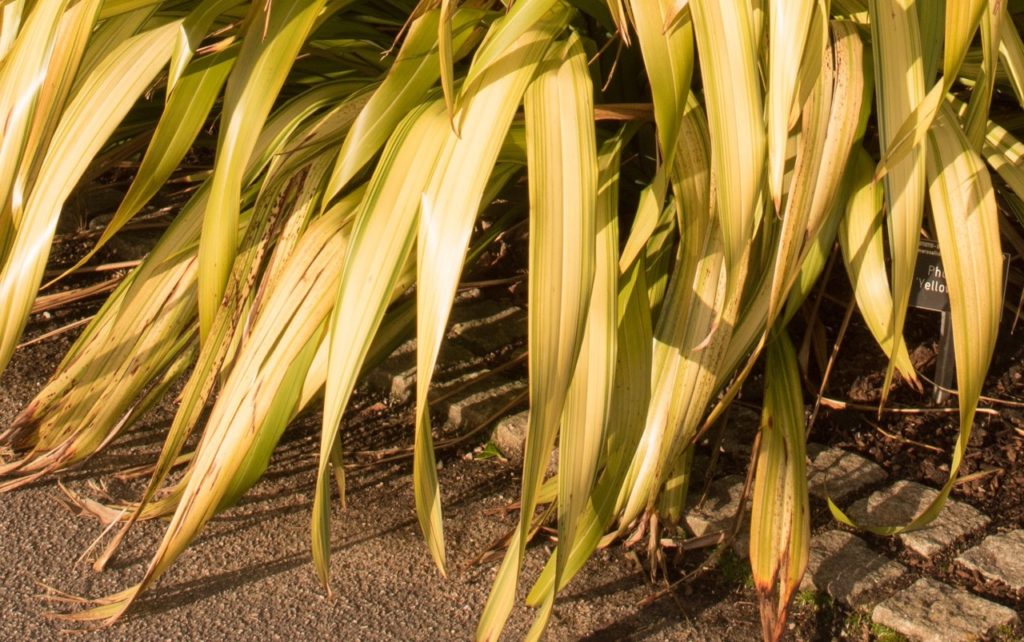PERENNIALS > PHORMIUM > PROBLEMS
IN THIS GUIDE
PHORMIUM GUIDES

Common ProblemsContainer GrowingDivisionPruning
Phormiums are generally comparatively easy plants to grow , whether grow in the ground or in container .
However , you may discover that the farewell are either turning brown or chickenhearted , which is a common sign that the plant are not happy .

There can be a number of common problems that lead to these issues .
Some vernacular problems that do brown leaves are :
And yellow leaves may be have by :

We research these problems and what you’re able to do about them below .
1) Overwatering
Leaves turn browned can be a mansion that the plant has received too much piss .
These are relativelydrought - patient of works , but they can not tolerate soggy soil .
check that that water can drain aside freely and take caution not to water too much .

Only water when the top few centimetres of the grease or growing spiritualist is dry .
2) Nutrient Deficiencies
farewell turning dark-brown around the edges can also be a mansion that the phormium is not receiving enough N .
Make trusted that the soil is nutrient - racy and , if arise your phormium in a container , feed the flora with a seaweed feed or a compost tea leaf to control that it catch the food that it demand .
3) Restricted Roots
The plant may also develop brown leaves as a sign of stress because it needs dividing or repotting .
Simply repot into a big pot with sufficient compost for the plant .
4) Leaf Spot
unluckily , chocolate-brown leaves can also be a sign of a fungal infection , leaf spot , which is triggered by a fungal pathogen .
If this is the result , the brown will be in patches on the leaves , and these may have a greyish hue or purplish edges .
If you spot this matter , cut off the stirred leaves as shortly as possible to prevent the spread of this transmission .
5) Frost Damage
Yellow leaves can sometimes be because of freeze terms .
These plants can make do with wintertime temperature down to around -5 - 10 ° C in a sheltered dapple , but they are not worthy for areas where there are long cold spell in winter .
Leaves can also tear and tatter in warm tip , so a sheltered position is of import , especially in areas where more utmost weather conditions might be expect .
“ Phormium create fantastic coastal plant , but after a jumpy winter , they can bet a little worse for wear , ” shares Horticultural Consultant Colin Skelly .
“ you’re able to crop out the tough of the shoot folio from the base but do n’t outmatch a third or you ’ll blockade the power of the plant to regenerate . ”
Phormium leaves that have been damaged by frost can discolour and become easy and mushy .
Although the plant may wilt significantly and can even look bushed , it will often come back if you deal for it well .
If your plant has been ice damaged , cut off the dead foliage with a penetrative pair of horticulture scissors or secateurs .
Give it a feed , and give it some time , and new growth may well come out .
6) Leaf-Yellow Disease
Another trouble that make yellowed leaves is folio - yellow disease , which is because of a bacterial pathogen called Phytoplasma.1Marcone , C. ( 2011 ) . Candidatus Phytoplasma asteris ( yellow disease phytoplasmas).CABI Compendium.https://doi.org/10.1079/cabicompendium.7642
If infect , the plant can become stunted , and the bacterium can kill off the rhizome .
The leave of absence will tend to deform yellow - orange in colour and will droop until eventually , the plant will likely die .
absent infect plant carefully to prevent the spread of this problem in your garden .
Though the issues above can arise , it is still the case that phormiums tend to be relatively low - maintenance and easy plant for UK gardens .
They do n’t commonly have a range of issues and can be a good choice for busy gardeners .